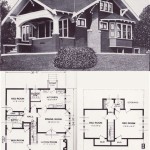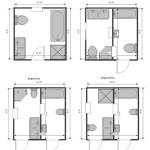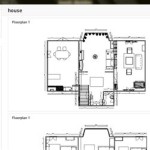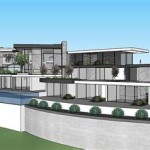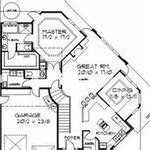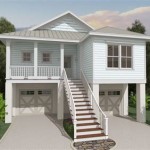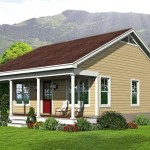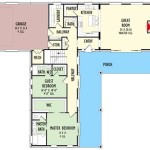Mid-Century Modern House Plans: A Timeless Design Aesthetic
Mid-Century Modern (MCM) house plans represent a significant architectural movement characterized by clean lines, functional design, and an emphasis on connecting with nature. Flourishing from the mid-1940s to the late 1960s, this style emerged from a desire for accessible and aesthetically pleasing homes for a post-war society. Understanding the core principles behind MCM architecture is essential for appreciating and implementing these house plans effectively.
The enduring appeal of Mid-Century Modern house plans lies in their adaptability to modern living while retaining a distinct character. The floor plans frequently prioritize open spaces, large windows, and the integration of indoor and outdoor areas, creating a bright and airy ambiance. Materials often include natural elements like wood, stone, and glass, contributing to the warm and inviting atmosphere that defines this architectural style. Furthermore, the principles of simplicity and functionality inherent in MCM design make these homes relatively easy to maintain and update for contemporary needs. Analyzing the key elements of these plans offers valuable insights into their lasting influence.
Key Principle 1: Embracing Open Floor Plans and Minimalism
A defining characteristic of Mid-Century Modern house plans is the emphasis on open floor plans. Unlike the compartmentalized layouts of previous eras, MCM designs aimed to create a sense of spaciousness and flow. Living rooms, dining areas, and kitchens often merged into a single, unified space, fostering social interaction and accommodating a more casual lifestyle. Walls were minimized, replaced by strategically placed furniture or subtle changes in floor level to delineate different areas. This open concept also allowed for better distribution of natural light throughout the home.
The concept of minimalism further reinforces the open floor plan. Clutter was actively discouraged, and furniture was chosen for its functionality and aesthetic appeal. Clean lines and simple forms were prioritized, contributing to a sense of order and tranquility. Built-in storage solutions were common, providing discreet ways to keep belongings organized and out of sight. This minimalist approach extended to the exterior of the house as well, with clean facades and minimal ornamentation.
The implementation of an open floor plan requires careful consideration of several factors. Traffic flow needs to be carefully planned to ensure comfortable movement between different areas. Acoustics should also be addressed, as large open spaces can amplify sound. Strategic placement of rugs, furniture, and soft materials can help to absorb sound and create a more pleasant acoustic environment. Furthermore, zoning the space with different lighting schemes can help to define different areas and create a sense of intimacy.
Key Principle 2: Prioritizing Natural Light and Indoor-Outdoor Connection
Mid-Century Modern house plans placed a significant emphasis on maximizing natural light. Large windows, often floor-to-ceiling, were incorporated into the design to flood the interior with sunlight. Clerestory windows, positioned high on the walls, were also frequently used to bring in additional light while maintaining privacy. The strategic placement of windows allowed for passive solar heating in the winter and natural ventilation in the summer, contributing to energy efficiency.
Equally important was the connection between the interior and exterior spaces. Sliding glass doors and patios extended the living area outdoors, blurring the lines between the inside and outside. Decks and patios were often designed as integral parts of the house, providing spaces for relaxation, dining, and entertaining. Landscaping played a crucial role in creating this connection, with native plants and simple designs that complemented the architecture.
Achieving a seamless indoor-outdoor connection necessitates careful planning. The orientation of the house is paramount, as it will determine the amount of sunlight received throughout the day. The selection of appropriate window coverings is also crucial for managing glare and heat gain. Planting trees and shrubs strategically can provide shade and privacy while enhancing the visual appeal of the landscape. The use of similar materials and design elements in both the interior and exterior spaces can further strengthen the connection between the two.
Key Principle 3: Utilizing Natural Materials and Geometric Forms
The selection of materials in Mid-Century Modern house plans reflected a desire for natural beauty and durability. Wood, particularly redwood, cedar, and teak, was extensively used for both structural elements and interior finishes. Stone, brick, and concrete were also common choices, adding texture and visual interest to the design. These materials were often left exposed, showcasing their natural grain and color.
Geometric forms, simplicity, and clean lines are hallmarks of the MCM aesthetic. Flat or low-pitched roofs, rectangular shapes, and cantilevered elements were frequently employed. These forms were often juxtaposed to create dynamic and visually appealing compositions. The use of geometric patterns and textures on walls, floors, and fabrics further enhanced the overall design.
Integrating these natural materials and geometric forms effectively requires careful attention to detail. The choice of wood species and finishes can significantly impact the overall aesthetic. The use of sustainable and locally sourced materials contributes to the environmental friendliness of the design. The proportions and scale of the geometric forms should be carefully considered to ensure that they are balanced and harmonious. Proper sealing and maintenance of natural materials are essential for preserving their beauty and longevity.
Beyond these core principles, Mid-Century Modern house plans also emphasized functionality and efficiency. Homes were designed to be easy to maintain and adapt to the changing needs of the family. Built-in furniture, ample storage, and well-organized spaces contributed to a sense of order and convenience. The use of innovative materials and technologies further enhanced the practicality and comfort of these homes.
The enduring popularity of Mid-Century Modern house plans can be attributed to their timeless design, functional layout, and connection to nature. These plans offer a range of options, from modest ranch-style homes to more elaborate designs with multiple levels and outdoor spaces. Whether renovating an existing MCM home or building a new one, understanding the core principles of this architectural style is essential for creating a space that is both beautiful and livable. Adaption of MCM principles allows homeowners to blend historical design with modern amenities.
The influence of European modernism, particularly the Bauhaus movement, played a significant role in shaping Mid-Century Modern architecture. The emphasis on functionalism, simplicity, and the integration of art and design can be seen in many MCM house plans. Scandinavian design also had a notable impact, contributing to the warm and inviting atmosphere that characterizes this style. Designers like Charles and Ray Eames, George Nelson, and Eero Saarinen further popularized MCM design through their innovative furniture and lighting.
Preserving the integrity of Mid-Century Modern house plans during renovations or additions requires careful consideration. Maintaining the original proportions, materials, and design elements is crucial for preserving the character of the house. Working with an architect or designer who specializes in MCM architecture can help ensure that any modifications are sympathetic to the original design. Replacing original features with modern equivalents should be done with careful consideration to ensure that they complement the overall aesthetic.
The accessibility of original and reproduction MCM furniture and accessories has contributed to the ongoing popularity of this style. Vintage furniture pieces can be found at antique stores, flea markets, and online auctions. Many manufacturers offer reproductions of classic MCM designs, allowing homeowners to furnish their homes with authentic-looking pieces. The use of bold colors, geometric patterns, and natural textures in furniture and accessories can further enhance the MCM aesthetic.
The landscaping surrounding a Mid-Century Modern house is just as important as the architecture itself. Simple, uncluttered designs with native plants and natural materials are characteristic of MCM landscaping. Gravel pathways, concrete patios, and redwood decks are common features. Minimalist plantings with a focus on texture and form create a sense of harmony between the house and its surroundings. The use of outdoor lighting can further enhance the beauty of the landscape at night.
In conclusion, Mid-Century Modern house plans offer a compelling blend of form and function that continues to resonate with homeowners today. The emphasis on open spaces, natural light, and indoor-outdoor connection creates a comfortable and inviting living environment. By understanding and embracing the core principles of this architectural style, homeowners can create a space that is both aesthetically pleasing and functional for modern living. The designs promote a sense of calm and connection through their minimalist and nature-focused approach.

Modern Style House Plan 3 Beds 2 Baths 1731 Sq Ft 895 60 Houseplans Com

Build A House With These Mid Century Modern Floor Plans Blog Eplans Com

Mid Century Modern House Floorplan P2403 Plans Vintage

Mid Century Modern House Plan With Split Bedrooms And 3 Car Garage 70805mk Architectural Designs Plans

Build A House With These Mid Century Modern Floor Plans Blog Eplans Com

Mid Century Modern House Plan With Courtyard 430010ly Architectural Designs Plans

Untitled Mid Century Modern House Plans Floor

Designing A Mid Century Modern Home Part Ii Wildfire Interiors

Build A House With These Mid Century Modern Floor Plans Blog Eplans Com

What Is Mid Century Modern Architecture Windermere Real Estate

